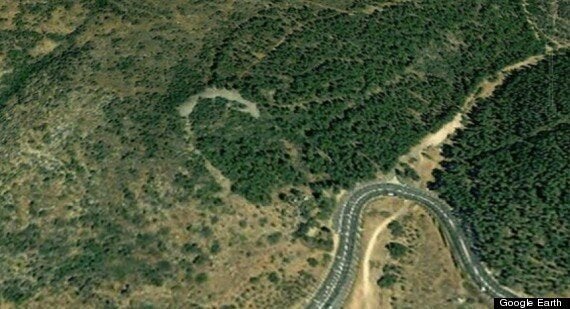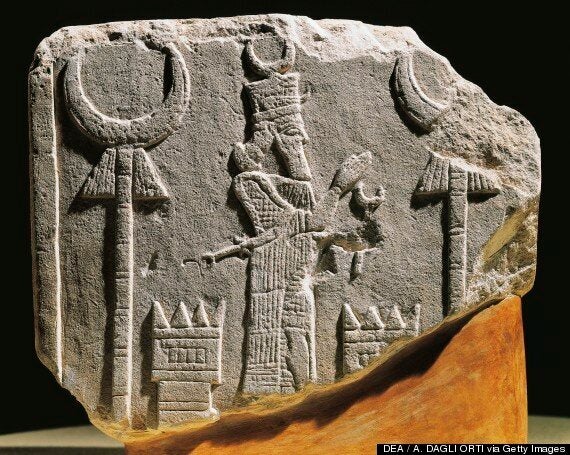A huge stone monument thought to have been built to honour an ancient god has been identified in Israel.
Known as Rujum en-Nabi Shua’ayb or Jethro Cairn, the 5,000-year-old structure is in the shape of the crescent moon and is located around 8 miles northwest of the Sea of Galilee.
It was previously believed to be the remnants of an old city wall, but Ido Wachtel a PhD student at Jerusalem’s Hebrew University has since suggested the man-made monument stood alone and had great religious symbolism.

The crescent-shaped monument discovered around 8 miles northwest of the Sea of Galilee
Presenting his findings at the International Congress on the Archaeology of the Ancient Near East, Wachtel surmised the structure may have been erected to honour the ancient Mesopotamian moon god ‘Sin’, Live Science writes.
Wachtel believes the monument may be linked to the ancient town known as Bet Yerah (which translates as ‘house of the moon god’), located around 18 miles away.
SEE ALSO:
He added: “The proposed interpretation for the site is that it constituted a prominent landmark in its natural landscape, serving to mark possession and to assert authority and rights over natural resources by a local rural or pastoral population."
The age of the 150m-long structure makes it even older than Egypt’s Great Pyramid of Giza and England’s Stonehenge.

Limestone stela depicting the Moon God Sin, rear view in an artefact from Tell Ahmar, Syria, 8th Century BC. Aleppo
According to mythology, Sin (also known as Nanna) wore a beard, rode on a winged bull and was sometimes represented as an old man with a flowing beard and the crescent symbol.
There are two further megalithic structures in the area which may also be linked to Bet Yerah.
One monument weighing more than 60,000 tonnes was discovered within the Sea of Galilee, the other, located to the east consists of four circles with a cairn (man-made pile of rocks) at the centre.
According to the Archaeological Institute of America, Bet Yerah was a fortified city occupied throughout the Early Bronze Age, from around the beginning of the third millennium BCE.
